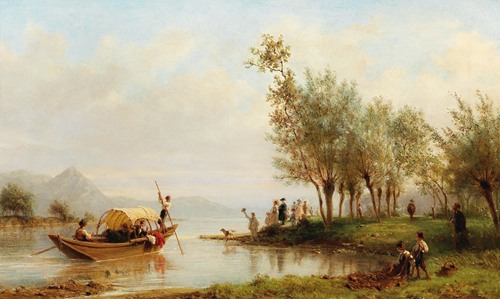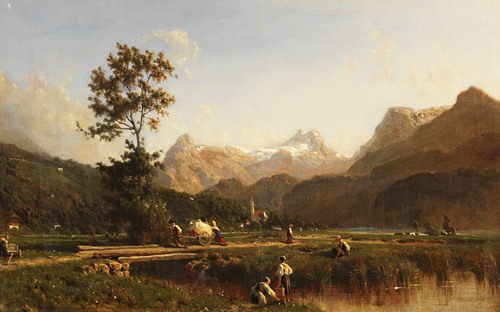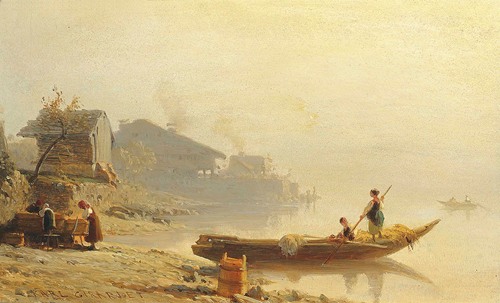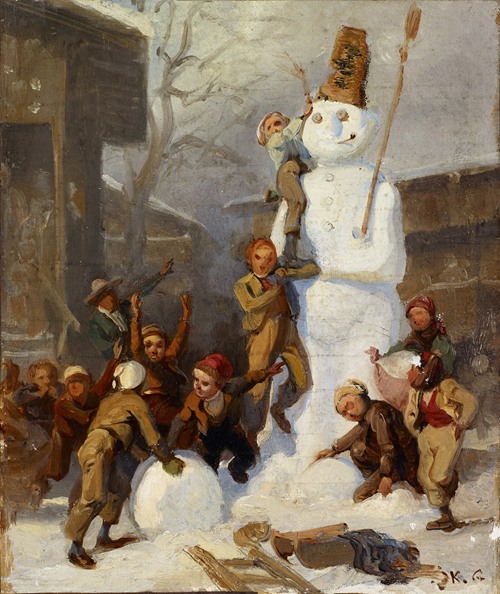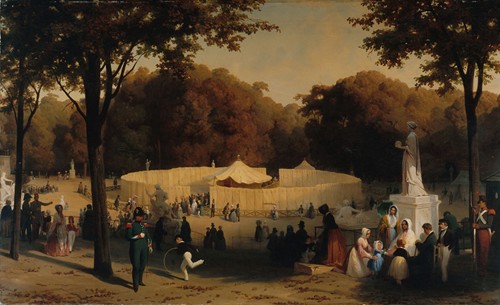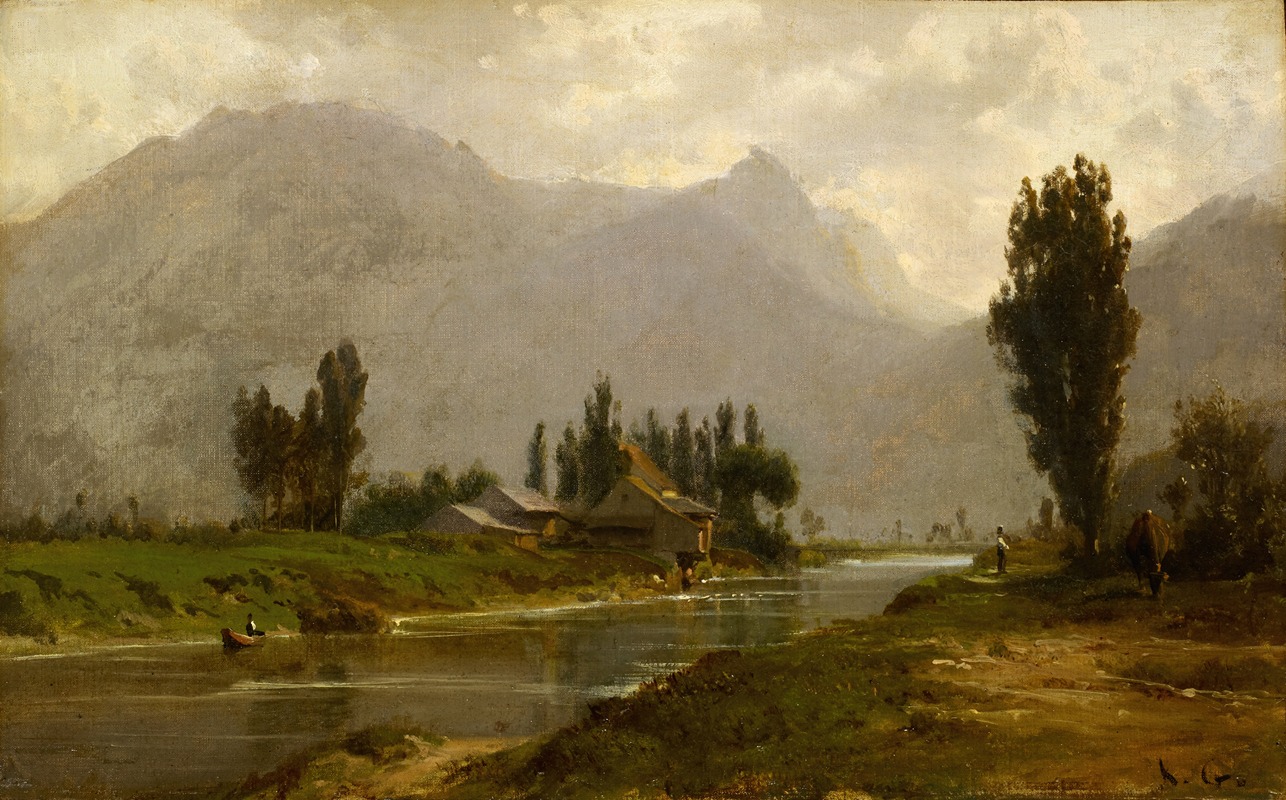
Karl Girardet was a Swiss painter and illustrator, who lived and worked mostly in Paris. After beginning his career as a landscape painter, he became a renowned history painter as well as a confidant to King Louis-Philippe I and an official court painter.
He was born as Charles Girardet in Le Locle, a part of the French Republic as the eldest son of the lithographer Charles Samuel Girardet. After 1822, he lived in Paris, where he trained as a painter with Louis Hersent and Léon Cogniet. His brother, Edouard, also became a painter.
On a study trip to Switzerland in 1833–35, he made the acquaintance of the aristocratic painter Maximilien de Meuron, by whose influence he obtained commissions for two panoramas of Lausanne. In 1836, he presented his first exhibits in the Salon of Paris and started working as a copyist for the French royal court.
An alpine landscape presented at the 1837 Salon obtained him a first distinction, and he successfully collaborated with Cogniet on two great battle scenes exhibited at Versailles. He embarked on travels across Europe, filling his sketchbook with landscapes in Düsseldorf (1838), Tyrol and Croatia (1839), and Italy (1840). A painting of a Protestant Assembly at Neuchatêl, Assemblée de Protestants surprise par des troupes catholiques (1839–42), earned him another distinction at the 1842 Salon and regular commissions by the Neuchâtel Friends of Art.
In 1839, Girardet illustrated his first book, Roland furieux, followed by Jardin des plantes by Boitard in 1842. After a six-month stay in Egypt, 1844, he continued illustrating works including Thiers's famous Histoire du Consulat et de l'Empire, and completed several royal commissions for paintings of state occasions.
Drafted into the National Guard, Girardet witnessed the fall of the monarchy in July 1848 and fled to Brienz, Switzerland, where he painted landscapes. In 1850, he returned to France to illustrate a great work edited by Alfred Mame about the history and the monuments of the Touraine. This work obtained a first-class medal at the Exposition Universelle of 1855 and earned Girardet many more commissions by Mame, notably for children's books and pious works.
In 1857, he moved his studio to the Montmartre quarter, where he would live until his death, and was admitted as a member of the Royal Academy of Amsterdam. He continued to embark on study trips, such as to the Valais (1858–1860), Italy (1861–1862) and Brunnen (1869).
In 1870, caught in besieged Paris during the Prussian invasion of France, Girardet damaged his eyesight while sketching the Prussian positions. Seized by anguish, fearing blindness, he died, alone in his apartment, of suffocation. He was unmarried, but had lived many years with the painter, Augustine Angelina Kaas, for whom he had provided a pension. His family inherited the remainder of his estate, some 100,000 francs.
More Artworks by Karl Girardet
